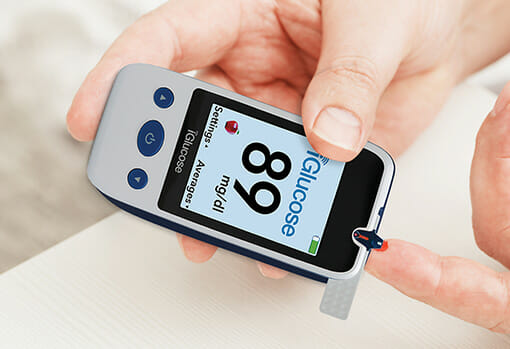Remote Patient Monitoring (RPM) has proven to be a game-changer in diabetes management. RPM enables individuals to make informed decisions about their diet, exercise, and insulin dosing, leading to better glycemic control and reduced risk of complications.
Understanding Remote Patient Monitoring
Remote Patient Monitoring, or RPM, is a healthcare delivery model involving digital technologies to collect and monitor patient data outside of traditional healthcare settings. RPM allows individuals, RPM companies, and healthcare providers to remotely track patients' vital signs, symptoms, and other health-related information in real time. By doing so, RPM enhances patient care and promotes proactive interventions.
How RPM Works in Diabetes Management
RPM plays a vital role in diabetes management, as it empowers patients to participate actively in their care while providing valuable insights for personalized treatment. Remote patient monitoring (RPM) for diabetes involves using technology to collect and transmit patient data from a remote location to healthcare providers. It enables healthcare professionals to monitor and manage diabetes in real time without needing in-person visits. The key components of remote patient monitoring for diabetes typically include:
-
Glucose Monitoring Devices:
Remote patient monitoring relies on glucose monitoring devices to measure blood sugar levels. These devices may include continuous glucose monitoring (CGM) systems, which use a sensor inserted under the skin to track glucose levels throughout the day, or blood glucose meters, which require a fingerstick blood sample for testing. Blood glucose monitors used in RPM are typically connected via Bluetooth or a cellular network. For more information on the benefits of cellular-connected devices, read our blog post on it.
-
Mobile Applications:
Mobile applications or software platforms collect and transmit data from glucose monitoring devices to healthcare providers. These apps may run on smartphones or other devices, allowing patients to enter their glucose readings, medication logs, diet information, and other relevant data. With cellular-enabled glucose monitors, there is typically no need for additional apps or patient portals.
-
Wearable Devices:
Besides glucose monitoring devices, wearable devices like smartwatches or fitness trackers may track additional health parameters relevant to diabetes management, such as heart rate, physical activity, sleep patterns, and stress levels. These devices can provide a comprehensive view of the patient's overall health and lifestyle.
-
Data Transmission and Connectivity:
Remote patient monitoring systems rely on secure data transmission and connectivity to transfer patient data from the monitoring devices to healthcare providers. This may involve wireless technologies like Bluetooth or cellular networks, ensuring data is transmitted reliably and securely. For more information read our blog post on the role of data collection in rpm.
-
Data Analytics and Interpretation:
The patient data is processed and analyzed using advanced analytics tools. Data analytics algorithms can identify trends, patterns, and potential issues related to diabetes management. Healthcare providers can use this information to make informed treatment plans and intervention decisions.
-
Patient Portals and Dashboards:
Patient portals or dashboards provide a user-friendly interface for patients and healthcare providers to access and review the collected data. These platforms allow patients to view their glucose readings, track their progress, receive educational materials, and communicate with their healthcare team.
-
Alerts and Notifications:
Remote patient monitoring systems can generate alerts and notifications based on pre-set thresholds or deviations from target glucose levels. These alerts can be sent to both patients and healthcare providers, prompting them to take action if necessary.
-
Care Coordination and Communication:
Remote patient monitoring facilitates ongoing communication and collaboration between patients and healthcare providers. It allows for virtual consultations, remote medication adjustments, and exchanging messages, ensuring patients receive timely support and guidance from their healthcare team.
By combining these key components, remote patient monitoring for diabetes can provide continuous and personalized care, empower patients to take an active role in their diabetes management and enable healthcare providers to deliver timely interventions and support.
Benefits of Remote Patient Monitoring for Diabetes
Remote Patient Monitoring (RPM) offers numerous benefits for diabetes management, empowering individuals with diabetes to control and effectively manage their health. Some of the most common benefits include:
-
Real-time data collection:
RPM enables accurate and timely data collection. This real-time data provides a comprehensive view of a patient's glucose levels and allows for more precise adjustments to insulin dosing and treatment plans.
-
Improved patient-provider communication:
RPM facilitates remote communication between patients and healthcare providers. Patients can securely share their glucose data with their healthcare team, enabling them to receive timely guidance, support, and adjustments to their treatment plans without the need for frequent in-person visits.
-
Early detection of issues:
RPM systems alert healthcare providers to potential complications such as hypo or hyperglycemic events. Timely alerts enable prompt intervention, reducing the risk of severe health consequences and hospitalizations.
-
Personalized care plans:
With access to RPM data, healthcare providers can tailor treatment plans to individual patients. This personalized approach optimizes diabetes management, improving glycemic control and better patient outcomes.
-
Enhanced patient engagement:
RPM empowers patients by providing them with actionable insights into their health. Patients can actively engage in self-management, make informed decisions based on real-time data, and take proactive steps to manage their diabetes effectively.
You Can Trust Our Devices To Help Manage Diabetes
Remote Patient Monitoring has emerged as a transformative approach in diabetes management. RPM empowers patients and healthcare providers through real-time data collection, improved communication, early issue detection, personalized care plans, and enhanced patient engagement. RPM devices revolutionize diabetes care, leading to better outcomes and improved quality of life for individuals with diabetes. Contact us today to learn more.




